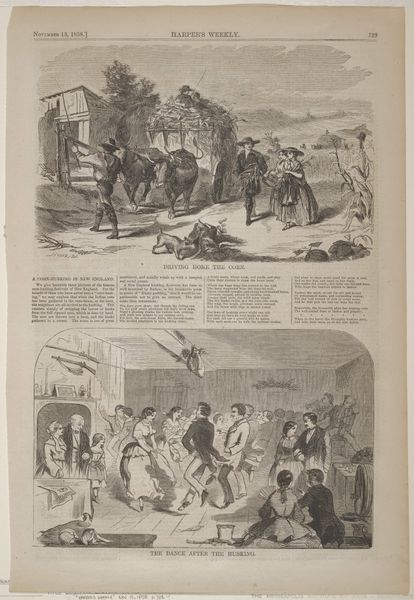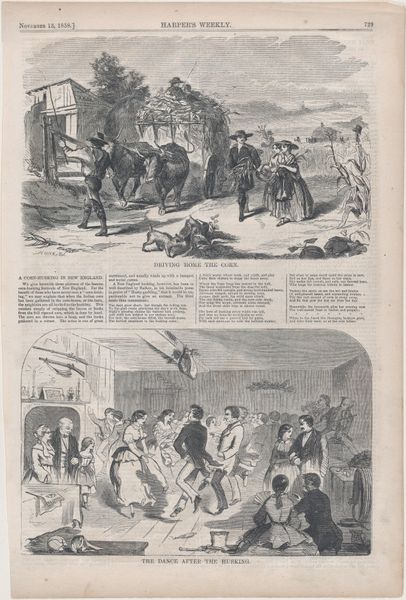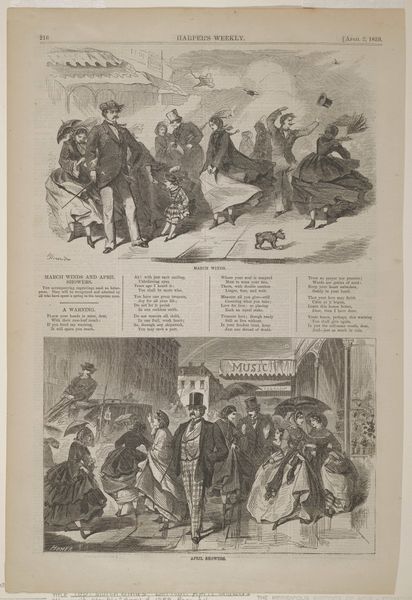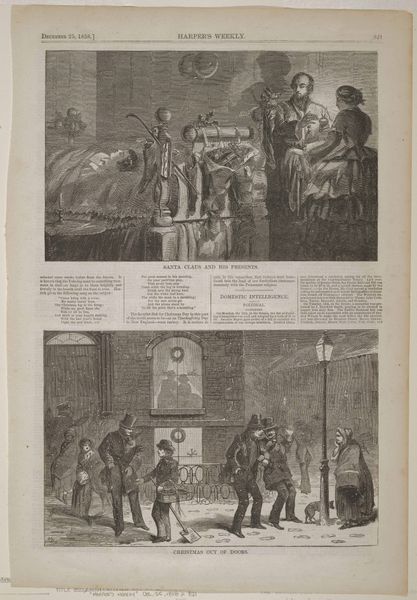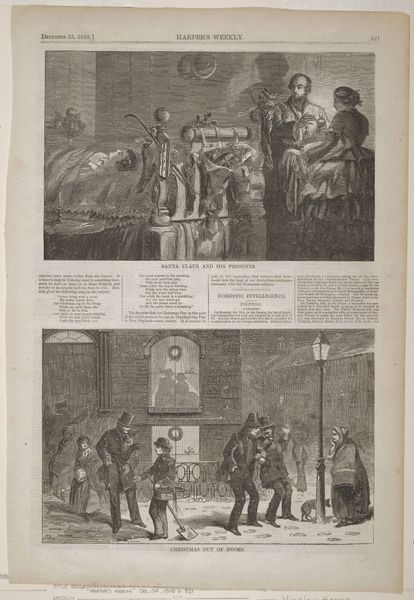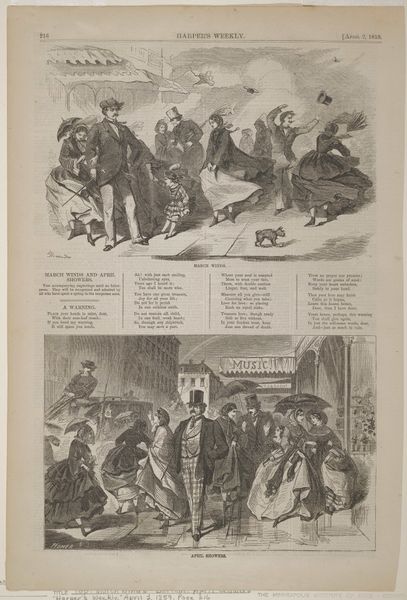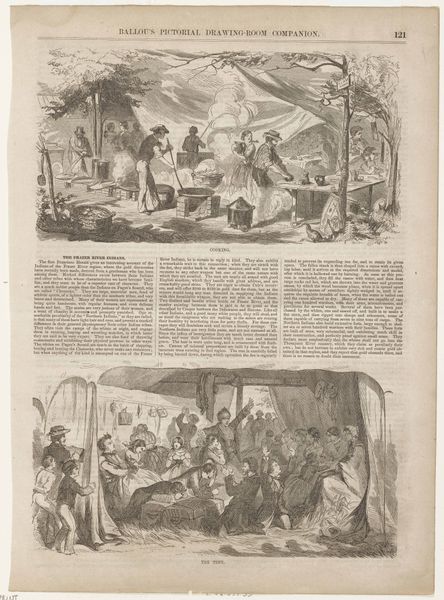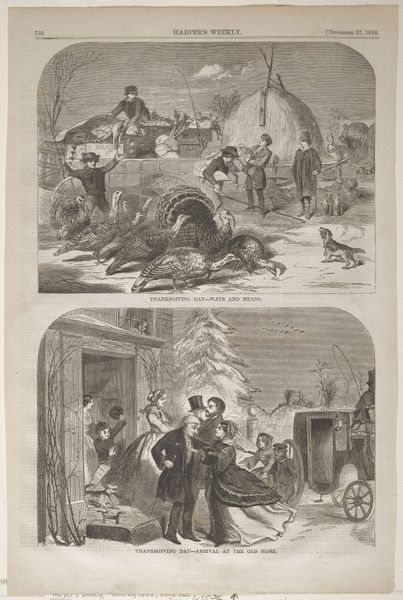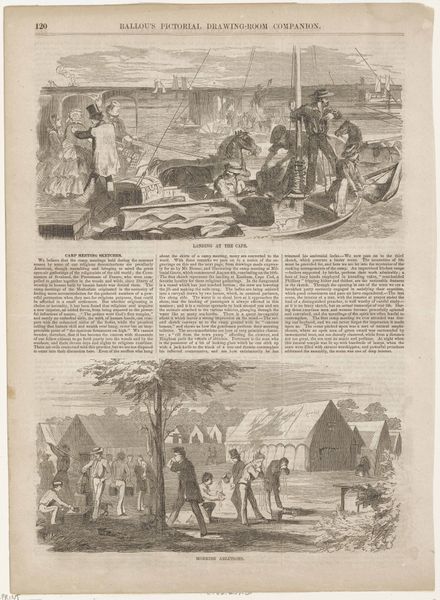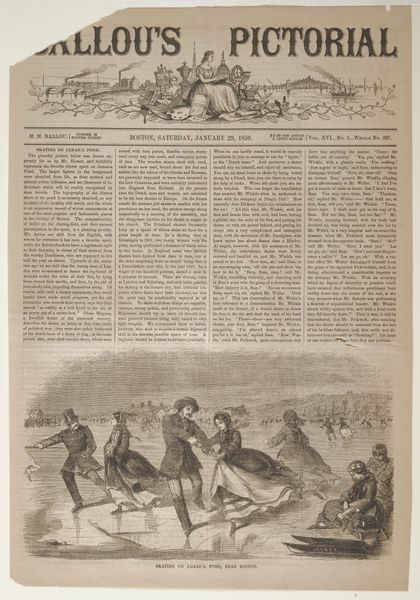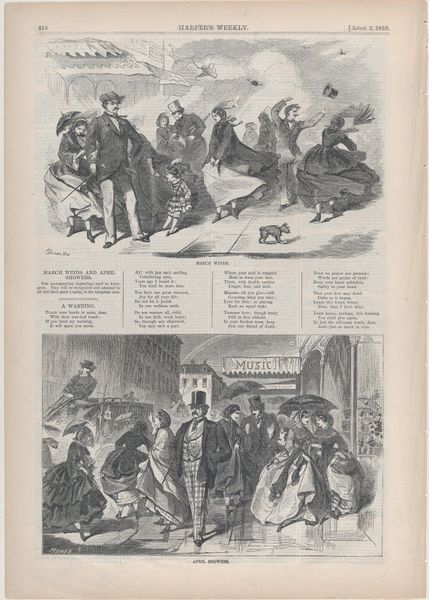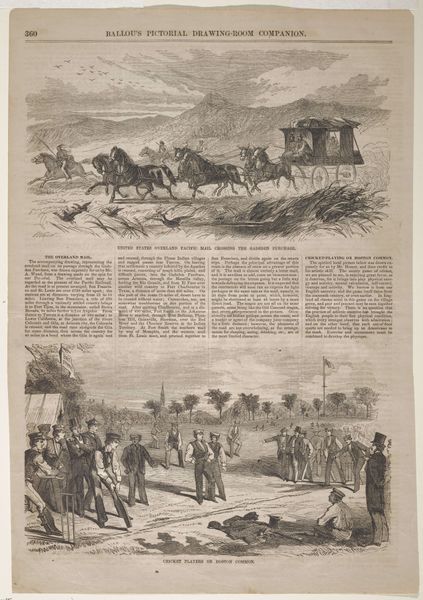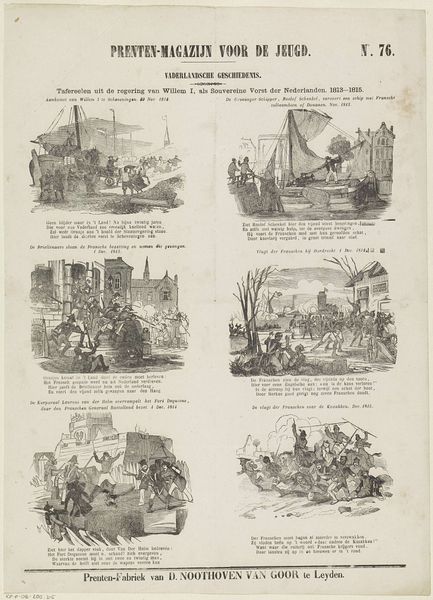
Dimensions: 5 7/8 x 9 1/4 in. (14.9 x 23.5 cm)
Copyright: Public Domain
Curator: Let’s consider "Driving Home the Corn" by Winslow Homer, dating back to 1858. The piece utilizes wood engraving. What catches your eye? Editor: Initially, I see a powerful evocation of rural America, a harmony between labor and the land. The black and white gives a nostalgic feel; it feels almost mythological, harking back to older agricultural traditions. Curator: Absolutely. Beyond the surface lies a crucial dialogue about the construction of American identity during a tumultuous period. Consider the romanticism associated with agrarian life juxtaposed against the realities of class and labor in pre-Civil War America. It subtly reflects a national narrative, intertwined with racial and economic hierarchies. Editor: I find that fascinating, especially considering how agricultural scenes like these often idealize rural labor, perhaps obscuring the less picturesque realities of farm life. Are there symbolic echoes here of the “cornucopia” myth, a visual narrative representing idealized harvest and community abundance? The composition itself is divided, a possible symbolic demarcation? Curator: That resonates deeply. I'm inclined to analyze Homer's choice of scene as part of the larger, complicated tapestry of national myth-making in 19th-century art. It suggests a vision of unity tied to the land, subtly reinforcing dominant power structures through what is included and conspicuously excluded in this depiction. We have this labor-intensive farming process, a collective event, yet… Editor: There are underlying ambiguities indeed. While the overt theme is communal harvest, there is almost a solemn mood to the way that the figures are placed, almost suggesting… a march? It's definitely much more layered than it might seem. Curator: And isn't that the genius of works like these? How seemingly simple pastoral images actively construct and reinforce prevailing cultural ideologies and power dynamics. It forces us to critically examine what we are inheriting, and consider what is often ignored in representations of the "common folk" throughout history. Editor: I agree, and as a visual representation, this offers a cultural touchstone for subsequent interpretations of American agrarian and folk heritage. A piece full of both overt and suppressed emotion!
Comments
No comments
Be the first to comment and join the conversation on the ultimate creative platform.
